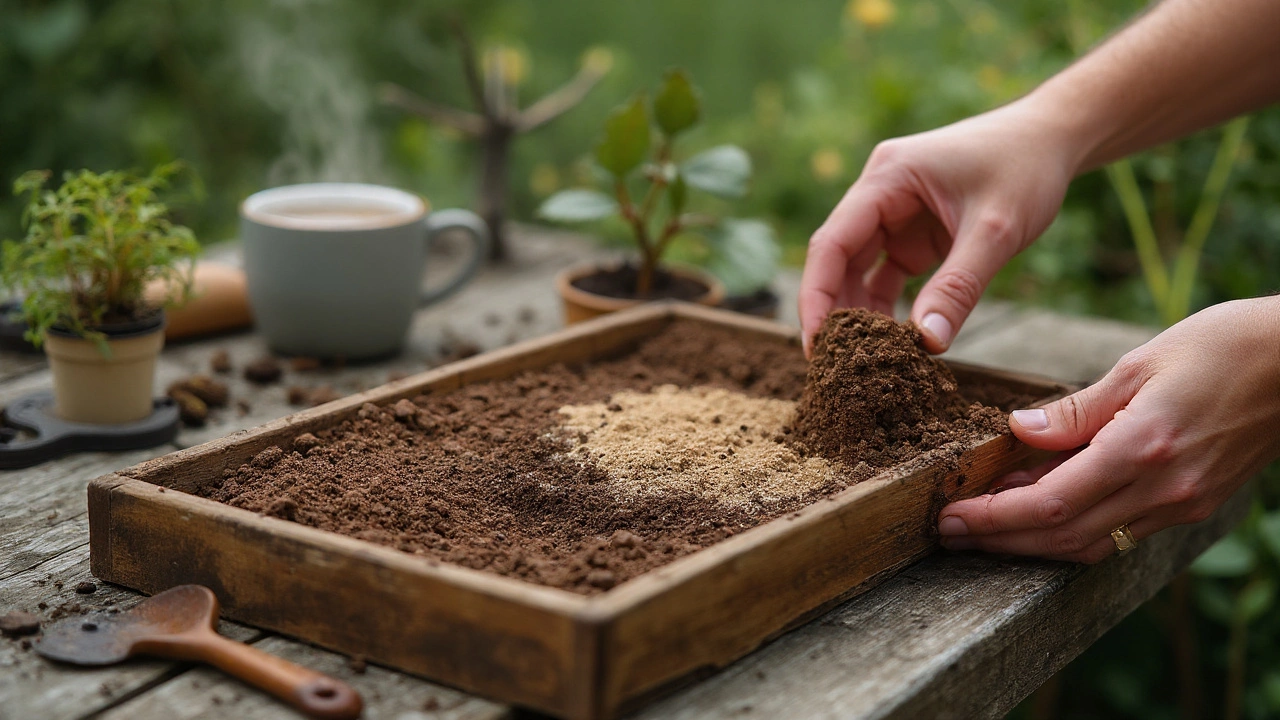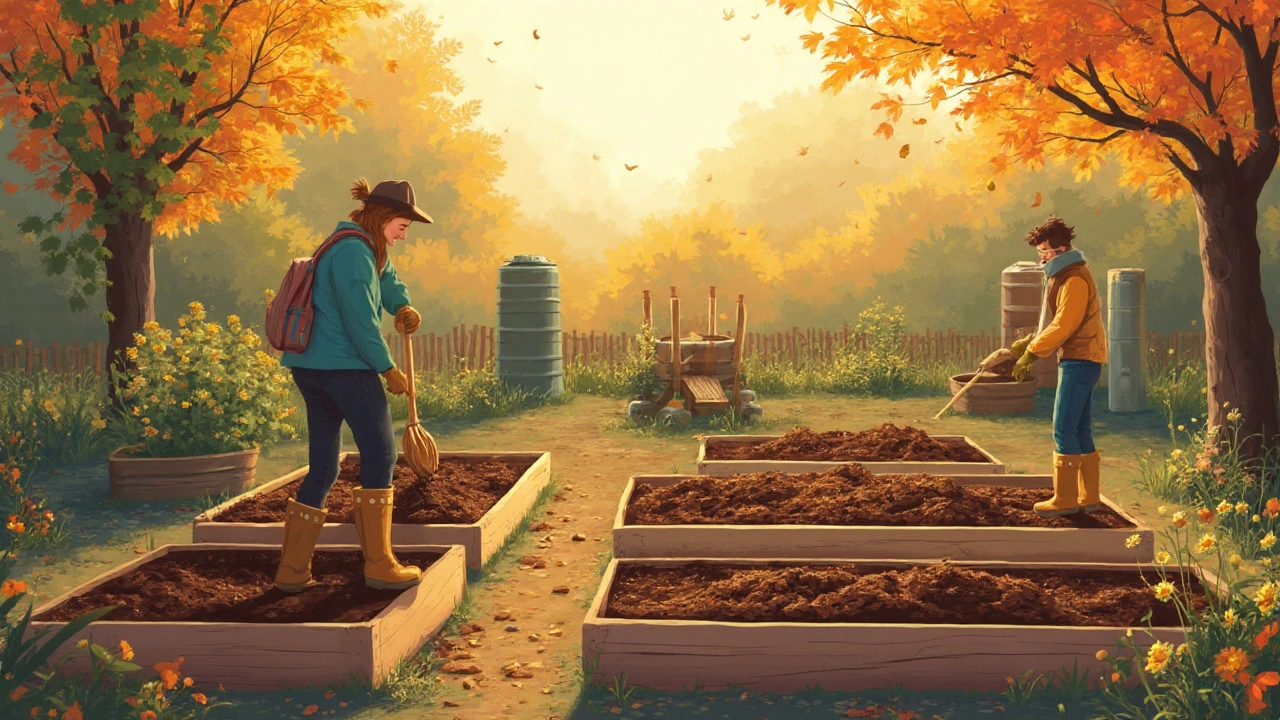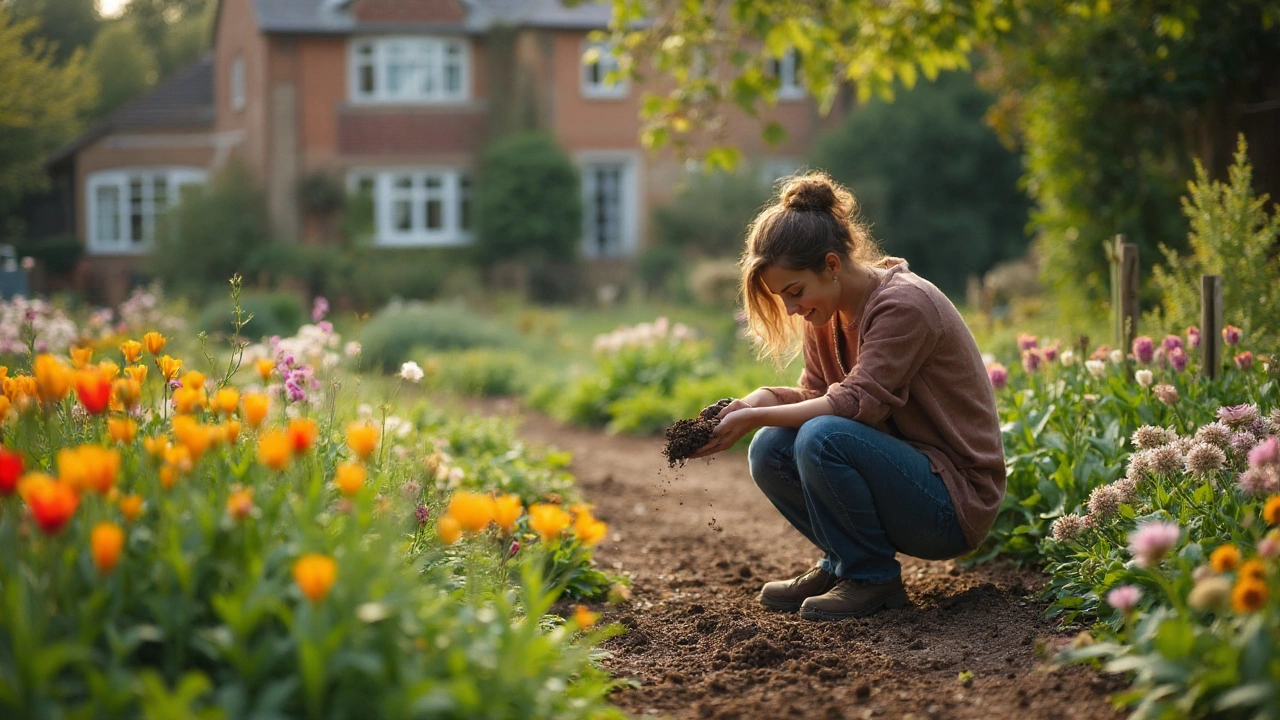What’s the secret sauce behind thick tomato vines and those leafy greens that look like they hit the gym? It isn’t just water and sun. It’s the soil. But, I’m not talking about the bagged dirt stuck on supermarket shelves. I mean real, living soil packed with life, nutrients, and all the good stuff for chemical-free, organic gardening. Ever tried scooping up a handful of dark compost and giving it a good sniff? If it smells like a forest after rain, you’re on the right path. Best soil for organic gardening isn’t magic, but it does require a few magic tricks—knowing your dirt, building it up, and keeping it alive. Most store-bought “garden soil” is weirdly lifeless, almost sterile. The secret is in what you mix in, not just what you buy.
The Building Blocks: What Makes Good Organic Garden Soil?
Let’s get one thing straight: not all dirt is created equal. Good organic garden soil has a few non-negotiables. First—texture. Your soil should be crumbly, not sandy and not clay-like. If it packs like modeling clay or sifts through your fingers like sugar, you’ll have problems. The sweet spot is loam, a mix of sand, silt, and clay, but with enough organic matter to keep things from turning into cement after a heavy rain.
What’s organic matter? Stuff like compost, well-rotted manure, shredded leaves, worm castings, and wood chips. It’s more than just plant food; it’s food for microscopic soil-dwellers. These guys turn dead things—kitchen scraps and leaves—into nutrients plants crave. Healthy soil isn’t dead. It’s full of earthworms, beetles, fungi, and billions of bacteria working full-time to boost plant growth. Kill the microbes, and your garden flops.
pH also matters—a lot. Most garden edibles like their soil between 6.0 and 7.0. Too acidic and your tomatoes sulk. Too alkaline and your carrots get all cranky and short. Handy gadgets, like soil pH meters, cost less than a coffee date and can steer you right.
Here’s a quick glance at different soil makeups and what they mean:
| Soil Type | Texture | Common Problems | Improvement Tips |
|---|---|---|---|
| Sandy | Gritty, drains fast | Dries out quickly, low nutrients | Add compost, use mulch |
| Clay | Sticky, holds water | Poor drainage, compacts | Add organic matter, avoid stepping on beds |
| Silty | Smooth, slippery when wet | Can crust, poor drainage | Mix in compost, grow cover crops |
| Loam | Crumbly, easy to dig | Rare—ideal soil! | Keep adding organic matter |
The best gardeners I know test their soil every few years. A $20 DIY test kit tells you way more than guessing ever could. You’ll know if you’re short on phosphorus, potassium, or in dire need of nitrogen. There’s no point dumping fertilizers if your soil’s pH means plants can’t even absorb them.
Organic Soil Ingredients: What to Mix In (and What to Skip)
Shopping for “organic garden soil” can feel like a blind date—packed with surprises, not always good ones. Skip generic potting soil or anything labeled “topsoil” from big box stores. You want ingredients you recognize and would feed your pets if you had to. My cat, Snowball, once rolled in a pile of compost and purred for hours. Natural stuff just feels right, even for picky animals.
Main ingredients you want? Compost tops the list. Good compost smells earthy, never sour. It delivers nutrients and microscopic life. Next: aged manure—never fresh, unless you enjoy blazing hot beds and endless weeds. Well-rotted cow, horse, or chicken manure adds slow-release nutrition and improves texture. Just watch that it’s free from herbicide residues. Legume hay or green manure—like vetch or clover—can be dug into the soil to boost nitrogen naturally. And don’t forget the humble worm castings. Even a couple cups sprinkled around each plant gives roots an instant boost.
Coco coir, made from coconut husks, is great for water retention if your garden dries up too soon. Perlite and vermiculite lighten heavy soils but aren’t as reusable as natural compost. Rock dusts—glacial or basalt—remineralize soils, giving trace elements plants rarely get from chemical fertilizers. Try adding shredded autumn leaves—they’re free and add fungi that boost plant roots. Don’t bother with peat. Besides destroying bogs, peat is hard to re-wet once dry and offers little food for soil life. And, never top up your garden with dyed wood chips, construction sand, or “fill dirt.” These aren’t just useless, they can ruin beds in a single season.
Curious about basic organic soil recipe? Start with:
- 50% finished compost
- 25% topsoil (sourced locally if possible)
- 15% aeration material (coco coir, perlite, or leaf mold)
- 10% aged manure or worm castings
Mix and tweak as you test, and you’ll nail the ideal blend for whatever you’re growing. Remember, the exact formula depends on your climate and what you’ve got on hand. The best soil is what works for your yard, not a glossy magazine garden two time zones away.

The Role of Soil Life: Why Microbes Matter More Than You Think
Ever noticed mushrooms popping up after you mulch your beds? That’s a sign of healthy soils. Mushrooms, earthworms, even weird, scurrying insects—they’re all friends. Here’s where the magic happens. Soil isn’t just a plant support system—it’s a giant living network, like an internet for roots. Microbes (bacteria, fungi, protozoa) break down organic matter, releasing nutrients in a form plant roots can absorb. Mycorrhizal fungi, for example, link plant roots to a citywide delivery network, letting them access water and minerals far beyond what roots could find alone.
Want evidence this matters? Researchers at the Rodale Institute found that organically managed soils can have 10 times more beneficial microbes than conventionally farmed fields. That’s why organic gardens stand up better to drought, recover from pests, and churn out ridiculously tasty tomatoes. If you’ve ever tasted a tomato fresh from organically grown soil, you’ll know there’s no going back to bland store-bought stuff.
How do you feed soil life? With every batch of compost, every layer of aged mulch, and every autumn leaf you spread on beds. Synthetic fertilizers and pesticides do the opposite—they hammer the living network. They may feed your plants for a season, but the more you use, the more dead and lifeless your soil becomes. That explains why some people notice their plants get weaker year after year, until all that’s left are weeds.
Adding compost tea or worm castings boosts life even more. These “living fertilizers” add beneficial microbes and fungi directly to the soil. Some folks make actively aerated compost tea (AACT), bubbling a bucket of water with compost and a dash of molasses. Water this onto beds to kickstart microbial activity. And don’t freak out if you see strings of fungus or little bugs in your soil—it means things are going well. If your soil lacks worms, add a few from a friend’s garden, or set up a worm bin to make your own castings.
How to Assess and Improve Your Garden Soil at Home
Start by grabbing a shovel and taking a quick survey. Is your soil soft and crumbly, or does it stick to your shovel in soggy clumps? Maybe it whips up into clouds of dust when dry. Here’s a simple texture test: take a small handful when moist and squeeze. Does it stay in a tight ball (clay), fall apart right away (sand), or form a soft, workable clump (loam)? If you can get your finger dirty and feel fine grit but with plenty of bounce, you’re getting close to loam territory.
Let’s get more precise. Fill a glass jar halfway with your soil, toss in water and a bit of dish soap, and shake like mad. Let it settle overnight. You’ll see layers: sand on the bottom, then silt, then clay on top. The thickness of each layer gives you a quick peek at what you’re working with. Finding more than one-third clay? You’ll need loads of organic matter and maybe raised beds. More than half sand? Count on extra compost and mulch to lock in moisture.
Checking pH is quick with a meter or simple paper strips. A bit too acidic? Add a sprinkle of garden lime. Too alkaline? Peat moss (used in moderation if you must), elemental sulfur, or composted oak leaves can help drop the pH over time. Just don’t expect overnight miracles—soil changes take a season or two to really show.
Improving bad soil isn’t a one-and-done affair. Each year, layer on 2-3 inches of finished compost, chopped leaves, or aged manure before planting. Cover crops, like crimson clover or buckwheat, grown over winter and chopped in spring, boost fertility and build tilth. Chop and drop—simply letting plant matter decay where it falls—mimics how forests build soil for hundreds of years.
- Mulch bare soil to avoid compaction and keep weeds down
- Avoid tilling more than you need—tilling destroys delicate fungal networks
- Water deeply, not often, to encourage deep roots
- Test soil every couple years and adjust your amendments
Got compacted ‘urban’ dirt filled with rubble or debris? Raised beds are your friend. Fill with your best homemade blends, leave the clay underneath undisturbed, and your plants will be smirking at the neighbors’ stunted onions by mid-June.

Frequently Asked Questions About Organic Garden Soil
Still curious? Let’s clear up a few common questions:
- Can I just use bagged soil marked "organic"? Only if you check the ingredients. Some “organic” mixes are still heavy on peat or low-grade fillers. Always add real compost to boost life.
- How much compost is too much? Rarely a problem, but aim for 2-3 inches mixed in and mulched on top. Too much uncomposted manure can burn plants, so stick to the well-aged stuff.
- Is homemade compost safe for edible gardens? Absolutely—if it gets hot enough to break down seeds and pathogens. Aim for 130–150°F for at least a few days in the pile’s center. A kitchen thermometer poked into a hot compost heap will surprise you!
- How do I know if I have enough worms? Dig a spadeful of soil and count—good garden soil has at least 5-10 worms per spadeful. Fewer than that and you need more organic matter.
- Can I reuse soil from old containers? Yes, but always refresh it with some new compost and check for signs of disease. If you lost plants to fungal wilt or pests, better to start fresh.
- How long does it take to improve soil? You’ll see results in one season with compost and mulch, but truly thriving organic soil comes after a couple years of steady care. Like good bread, it’s worth the wait.
The truth is, perfect soil exists in nature way more than it does in store bags or “one-size-fits-all” blends. If you’re growing organically, aim for soil that feels alive, drains well, holds moisture, and makes pulling carrots feel like slicing through butter. Invest your time in soil, and the rewards—lush plants, bumper harvests, and hungry worms—always pay big.
